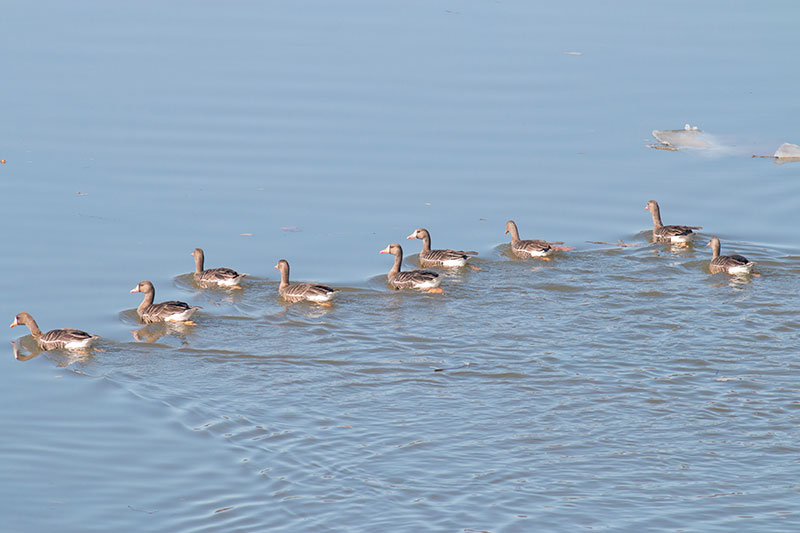Early Spring Migration
3/6/16
By David Brown
Many nature documentaries highlight the amazing migration and behavior of birds, but the viewer is often left feeling that such spectacles occur in a distant land that perhaps it would be nice to take a vacation to some day. However, the truth is that within a few miles of Williamsport one can easily witness breathtaking sights of birds and March is one of the best times of year to do so.
One of the most spectacular sights in March is thousands of geese and swans migrating north. Skeins of Canada and snow geese migrate high overhead and occasionally spiral down onto farm fields. Tundra swans pass over like squadrons of bombers on the way to their arctic breeding grounds.
In February, greater white-fronted geese were found throughout Pennsylvania in record high numbers. This species of goose is a common migrant throughout the western United States but are rarely found in the east. A flock of ten was found on the river in McElhattan and thirteen were seen on the river between Williamsport and Nisbet.

Greater White-fronted Geese
Many dabbling ducks migrate through in March. Watch wetland areas and ponds for waterfowl such as northern pintails, American wigeons, and green-winged teals.
March is the peak of gull migration. Watch for flocks of thousands of gulls on farm fields and the river. The majority are ring-billed gulls, with a small number of larger herring gulls mixed in. Sometimes individuals of rarer species such as great black-backed, Iceland, or glaucous gull are found as well. In late-March and early-April, small Bonaparte's gulls migrate through.
Three great black-backed gulls have been found in large gull flocks near the Williamsport dam in recent weeks. This is a good example of a species that was assumed to be very rare in the county but was probably just underreported in the past because there was not a dedicated effort by skilled observers to regularly look through large migrating gull flocks.
The first two weeks of March are the peak of golden eagle migration. Travel to the famous Tussey Mountain hawk watch near State College or stop by the overlook on Route 15 near South Williamsport for a chance to see these huge raptors.
At dusk and dawn, listen for the distinctive “peent” call of the American woodcock. Also known as the timberdoodle, this species has been described as looking like a loaf of bread on a popsicle stick. Males call on the ground then spiral high into the air in a display flight before plopping down in nearly the exact same spot they took off from.
Watch for massive mixed flocks of red-winged blackbirds, common grackles, European starlings, and brown-headed cowbirds. These flocks can form large streams in the sky that take minutes to pass by.
Listen for the high pitched call of the killdeer. This funny looking shorebird prefers the gravel of train tracks and parking lots rather than the beach.
Take a few minutes each day to look up and around. The more you observe the more you will appreciate what a beautiful area we live in.